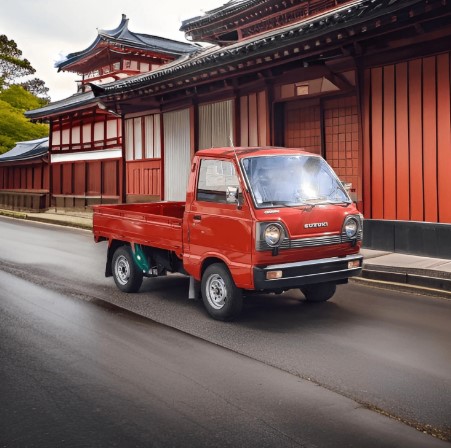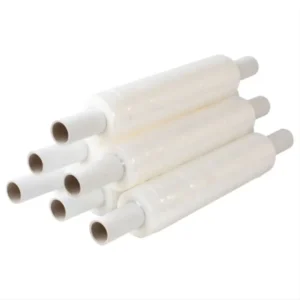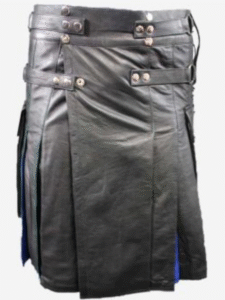
When it comes to compact utility vehicles, the Suzuki Carry stands out as one of the most well-known and widely used mini trucks across the globe. From farm work in rural Japan to small business deliveries in Southeast Asia and even off-road utility in North America, the Suzuki Carry has developed a reputation for being a small but mighty workhorse. But how does its reliability stack up against other mini trucks on the market?
In this in-depth comparison, we’ll examine the reliability of the Suzuki Carry Truck, exploring factors such as engine longevity, maintenance, performance, common issues, and how it holds up when compared to competitors like the Daihatsu Hijet, Honda Acty, Subaru Sambar, and Mitsubishi Minicab. Whether you’re considering a mini truck for your business or off-road adventures, this guide from Oiwa Garage Suzuki Carry will help you make an informed decision.
Table of Contents
-
Overview of the Suzuki Carry Truck
-
What Makes a Mini Truck Reliable?
-
Engine Reliability of the Suzuki Carry
-
Maintenance Requirements
-
Real-World Lifespan and Mileage
-
Suzuki Carry vs Daihatsu Hijet
-
Suzuki Carry vs Honda Acty
-
Suzuki Carry vs Subaru Sambar
-
Suzuki Carry vs Mitsubishi Minicab
-
Parts Availability and Aftermarket Support
-
Off-Road and Load Durability
-
User Reviews and Global Reputation
-
Reliability Verdict from Oiwa Garage Suzuki Carry
-
Final Thoughts
1. Overview of the Suzuki Carry Truck
The Suzuki Carry Truck has been a staple of utility transport since the 1960s. With over five decades of development, this mini truck has evolved into a dependable, no-frills vehicle. Compact in size but large in utility, it’s especially favored in tight city streets, farms, and construction zones where maneuverability and efficiency are key.
Suzuki Carry trucks are equipped with small-displacement engines (typically around 660cc for kei truck versions in Japan) and are offered in both two-wheel and four-wheel drive models. With a lightweight chassis, simple mechanicals, and a utilitarian design, the Suzuki Carry is designed to get the job done.
2. What Makes a Mini Truck Reliable?
Before diving into brand comparisons, let’s define what “reliable” means in the mini truck world:
-
Consistent Start and Operation: The ability to perform without failure over time.
-
Low Maintenance Requirements: Vehicles that don’t require frequent repairs or part replacements.
-
Longevity of Components: Durable engine, transmission, brakes, and chassis.
-
Availability of Replacement Parts: Easy access to affordable replacement parts.
-
User Feedback and Field Reports: Real-world performance from owners over many years.
When we apply these criteria, the Suzuki Carry ranks high across the board, especially with guidance from expert mini truck specialists like those at Oiwa Garage Suzuki Carry.
3. Engine Reliability of the Suzuki Carry
The engine is the heart of any vehicle, and the Suzuki Carry is equipped with an array of small but sturdy engines depending on the generation.
Some of the most reliable Suzuki Carry engines include:
-
F6A: A 657cc SOHC 3-cylinder engine known for simplicity and durability.
-
K6A: A DOHC 660cc engine with slightly more modern tech and better fuel efficiency.
Both engines have proven themselves across decades of use, often reaching over 150,000 km with only basic upkeep. Cooling systems, oil seals, and belts hold up well when maintained on schedule.
At Oiwa Garage Suzuki Carry, technicians often report that customers bring in vehicles with over 200,000 km on the odometer that are still running strong — a testament to the engine reliability.
4. Maintenance Requirements
Another reason the Suzuki Carry shines in the reliability department is its low maintenance overhead.
Typical service items include:
-
Oil changes every 5,000–7,000 km
-
Spark plug and belt replacements every 30,000–40,000 km
-
Brake pad replacements every 40,000–60,000 km
-
Coolant and transmission fluid changes every 2–3 years
Most parts are relatively inexpensive, and with the simple design, even DIY mechanics can handle routine service. Oiwa Garage Suzuki Carry offers maintenance kits and video tutorials to help owners manage upkeep without visiting a dealership.
5. Real-World Lifespan and Mileage
One of the best indicators of a vehicle’s reliability is how long it lasts. Suzuki Carry trucks have been known to last upwards of:
-
150,000–200,000 km with regular maintenance
-
Some units exceed 250,000 km, especially when used in light-duty conditions
-
Many older models from the 1990s are still in use in rural regions and on farms
Compare that to some competitors that may start experiencing drivetrain or electrical issues around 120,000–150,000 km, and the Suzuki Carry’s durability becomes clear.
6. Suzuki Carry vs Daihatsu Hijet
Daihatsu Hijet is one of the most direct competitors to the Suzuki Carry. Both trucks share a similar profile, engine size, and layout. However, in terms of reliability:
| Feature | Suzuki Carry | Daihatsu Hijet |
|---|---|---|
| Engine durability | Excellent | Very Good |
| Parts availability | Very High | High |
| Electrical reliability | Strong | Occasionally spotty |
| Serviceability | Easier (less cramped) | Slightly complex |
While the Hijet is also highly dependable, many mechanics prefer working on the Suzuki Carry due to its better layout and simpler mechanicals.
7. Suzuki Carry vs Honda Acty
Honda Acty is another big name in the kei truck world. Honda’s mid-engine layout makes it unique, but it also introduces challenges.
| Feature | Suzuki Carry | Honda Acty |
|---|---|---|
| Engine location | Front-mid | Mid-rear |
| Ease of maintenance | Easier | Harder (tight fit) |
| Engine reliability | Very Good | Good |
| Cooling issues | Rare | Occasionally noted |
Honda’s engine designs are excellent, but the Acty’s compact engine bay makes maintenance more difficult, which can impact long-term reliability if routine work is neglected.
8. Suzuki Carry vs Subaru Sambar
The Subaru Sambar is praised for its car-like ride and full-time AWD system, but it has unique quirks that affect reliability.
| Feature | Suzuki Carry | Subaru Sambar |
|---|---|---|
| Engine type | Simple 3-cylinder | 4-cylinder boxer |
| Parts availability | High | Moderate |
| Mechanical complexity | Low | Higher |
| Long-term reliability | Very High | Moderate-High |
While the Sambar’s boxer engine is well-engineered, it’s more complex and expensive to repair. The Suzuki Carry wins on simplicity and cost-efficiency.
9. Suzuki Carry vs Mitsubishi Minicab
Mitsubishi Minicab is known for being rugged and having decent parts support, but its long-term reliability is slightly less proven compared to Suzuki.
| Feature | Suzuki Carry | Mitsubishi Minicab |
|---|---|---|
| Engine durability | High | Moderate-High |
| Electrical issues | Rare | Some reports |
| Rust resistance | Moderate | Moderate |
| Longevity | Excellent | Good |
The Minicab is a solid truck, but Suzuki’s longer heritage and better global parts network give it the edge in overall reliability.
10. Parts Availability and Aftermarket Support
Thanks to global use and a massive production run, Suzuki Carry parts are everywhere. Whether you’re looking for:
-
Brake components
-
Timing belts
-
Clutches
-
Suspension arms
-
Electrical sensors
You’ll find them easily through suppliers like Oiwa Garage Suzuki Carry, which specializes in JDM parts sourcing and aftermarket accessories.
Compared to niche models from other brands, the Carry has far broader support, especially in export markets.
11. Off-Road and Load Durability
Many mini trucks are used in off-road and rugged terrain situations. The Suzuki Carry, particularly in 4WD configuration, has earned respect in these areas.
Key features include:
-
Strong leaf-spring rear suspension
-
High ground clearance (especially with lift kits)
-
Locking differentials on some models
-
Tough steel bed and frame
Owners report using Suzuki Carry trucks on farms, mountains, and muddy construction zones for years with minimal issues. Oiwa Garage Suzuki Carry offers off-road upgrade packages including lift kits, all-terrain tires, and underbody skid plates.
12. User Reviews and Global Reputation
Across forums, YouTube channels, and user reviews, the Suzuki Carry is consistently praised for:
-
Dependability
-
Simplicity
-
Affordability
-
Versatility
In many regions like Indonesia, India, and the Philippines, it is not uncommon to see 20+ year old Suzuki Carry trucks still working daily.
U.S. importers also note the Carry’s ease of registration, road-worthiness, and potential for customization as reasons it’s become so popular in North America.
13. Reliability Verdict from Oiwa Garage Suzuki Carry
At Oiwa Garage Suzuki Carry, our technicians see hundreds of mini trucks come through the shop each year. From pre-inspections to custom builds, we track long-term performance closely.
Here’s our reliability verdict:
-
Suzuki Carry is the most reliable mini truck overall, offering the best balance of durability, simplicity, and parts support.
-
It beats competitors in long-term ease of maintenance, off-road ruggedness, and global availability.
-
Owners who follow basic maintenance enjoy decades of trouble-free performance.
14. Final Thoughts
If reliability is your top concern, the Suzuki Carry Truck should be at the top of your list. Its time-tested engine, durable frame, low maintenance costs, and massive global support network make it an unbeatable choice for small businesses, farms, and daily utility.
Whether you’re hauling gear in the city or navigating trails on your property, the Oiwa Garage Suzuki Carry can be trusted to get the job done — year after year.



